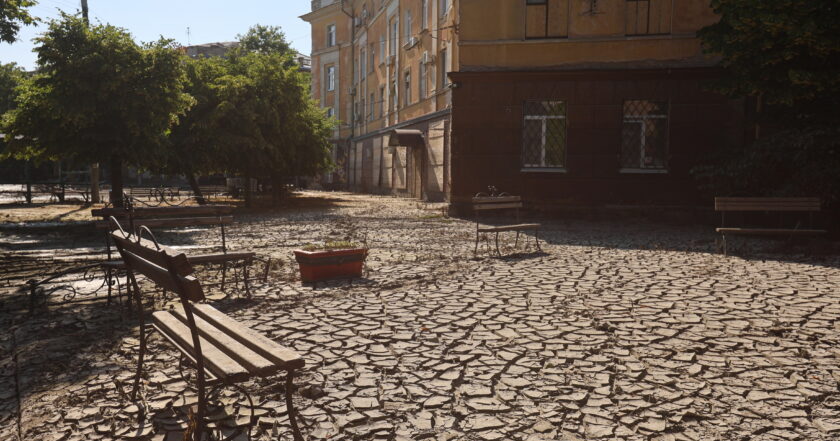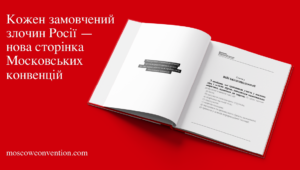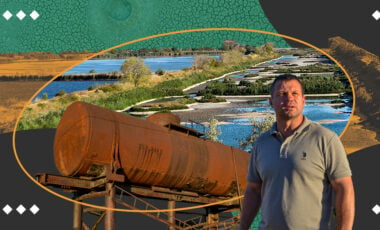Significant drop in water levels in Kakhovka reservoir risks nuclear safety of Zaporizhzhia nuclear plant

New reliefs of Atlantis that came out of the water
The destruction of the Kakhovka reservoir on June 6th due to Russian occupation of Ukraine significantly increased the risks to the Zaporizhzhia nuclear plant. The dramatic lowering of the Kakhovka reservoir water level could lead to a collapse of the dyke holding the water in the pond needed to cool the highly radioactive fuel inside the plant. The ongoing occupation of the plant compromises nuclear safety and any emergency intervention if a crisis would occur following damage to the dyke of the power plant. Such damage could be either accidental, because of the increasing water pressure, or following a criminal act of sabotage by Russian troops. The Russian occupation needs to end immediately and Ukrainian control over the plant must be immediately re-established.
The main concerns Greenpeace CEE raises are the following:
The cooling pond reservoir at the Zaporizhzia nuclear site is at risk of leakage and potential collapse if water levels in the Kakhovka reservoir drop dramatically. Ukraine authorities have stated they expect levels to drop to as little as 3 meters within the week, from 17.4 metres before the destruction of the Kakhovka dam. This drop in water levels increases the water pressure on the dyke walls of the cooling reservoir of the power plant. Securing alternative water supplies is being planned by Ukrainian nuclear personnel and the plant's owner Energoatom, but could be impossible under the Russian occupation. Such a collapse of the cooling pond reservoir will massively complicate essential cooling water supplies for the six reactors and nuclear spent fuel at the site. Although the six reactors are in cold shutdown, the residual heat of the highly radioactive fuel requires constant cooling.
Russian occupation of the Zaporizhzhia nuclear site, specifically by military forces and Rosatom (the Russian nuclear state corporation), severely prevents the Ukrainian nuclear personnel from fulfilling their essential safety roles. They are operating under impossible circumstances.
"A few days ago, the idea that the Kakhovka dam would be destroyed and the reservoir would be flooding Kherson, wider southern Ukraine, and into the Black Sea was only a nightmare – now, due to deliberate Russian actions, it is another tragic reality for the people of Ukraine. The possibility that an extreme action is taken by Russian forces against the Zaporizhzhia nuclear plant must be considered a credible threat. The Russian military and Rosatom must immediately retreat from the nuclear plant. All efforts must be directed to the Russian government, including by the International Atomic Energy Agency (IAEA), demanding that there will be no destruction of the cooling water reservoir or any other part of the Zaporizhzhia nuclear plant site," said Jan Vande Putte, Greenpeace nuclear expert.
Greenpeace Germany's analysis published on 2 March 2022 warned of the Russian military threat to essential safety of the Zaporizhzhia reactors, including cooling water supply and risks from flooding and damage to the Kakhovka hydro dam. The Russian military and Rosatom have been occupying the nuclear plant since 4 March 2022.




















































